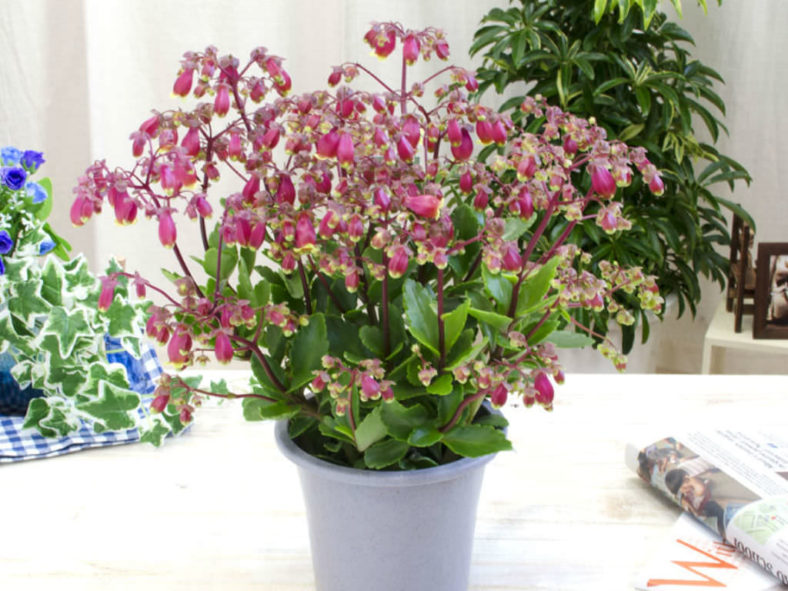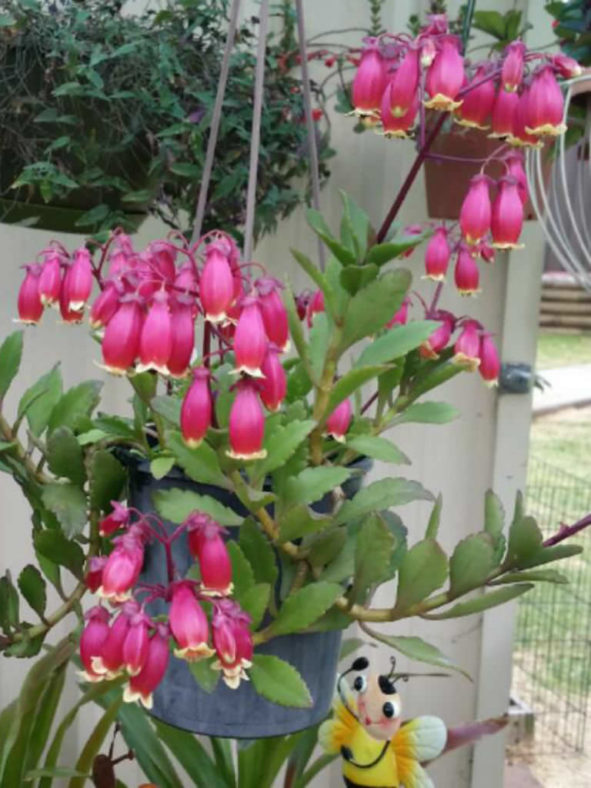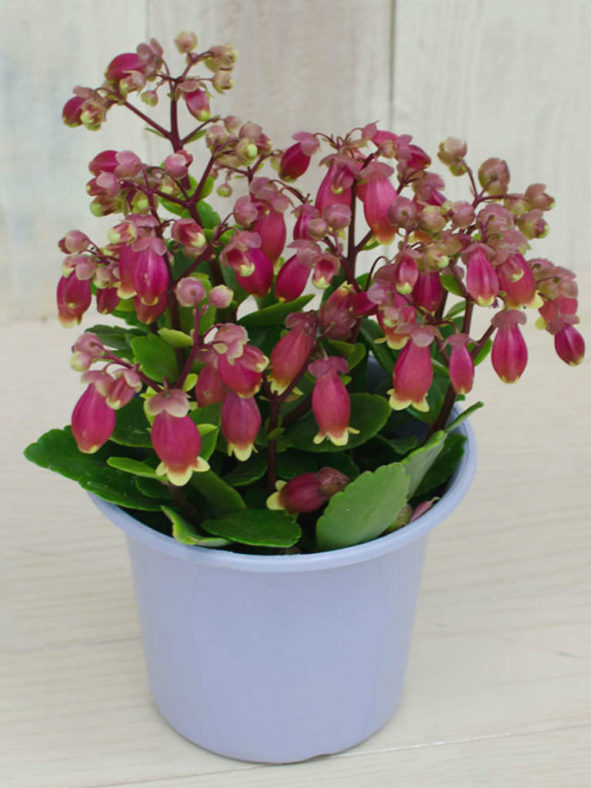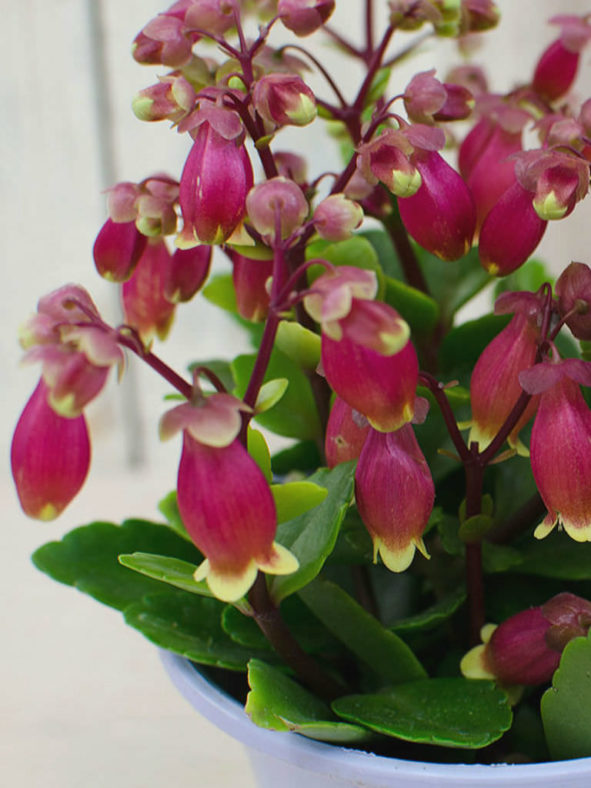Scientific Name
Kalanchoe 'Wendy'
Synonym(s)
Kalanchoe manginii 'Wendy', Kalanchoe porphyrocalyx 'Wendy'
Scientific Classification
Family: Crassulaceae
Subfamily: Sedoideae
Tribe: Kalanchoeae
Genus: Kalanchoe
Origin
European Gardenflora, 1989 considers Kalanchoe 'Wendy' a hybrid that results from a cross between Kalanchoe miniata and Kalanchoe porphyrocalyx. However, there are doubts regarding its hybrid status because of its similarity to the species Kalanchoe porphyrocalyx, and Smith & Shtein prefer to consider it a cultivar of the latter. This plant is also sold as a cultivar of Kalanchoe manginii. An identical plant is sold as Kalanchoe 'Pearl Bells' or Kalanchoe blossfeldiana 'Pearl Bells'.
Description
Kalanchoe 'Wendy' is an attractive succulent shrublet with semi-erect to slightly pendent stems bearing fleshy, mid-green leaves and clusters of nodding, rose-purple flowers tipped with pale yellow. It can grow up to 16 inches (40 cm) tall. The leaves are egg- to lance-shaped with irregular, shallow, rounded teeth along the margins. They can measure up to 2.8 inches (7 cm) long and 1 inch (2.5 cm) wide.
The urn-shaped flowers appear on branched stalks in late winter and spring. They can reach about 0.9 inches (2.3 cm) in length and 0.5 inches (1.3 cm) in diameter.

Hardiness
USDA hardiness zone 10a to 11b: from 30 °F (−1.1 °C) to 50 °F (+10 °C).
How to Grow and Care
Kalanchoe care is minimal, but be cautious about light levels. Intense sunlight can burn the tips of the leaves. Place pots in partial sun to light shade areas when growing Kalanchoes.
The flowering varieties are highly rewarding for their colorful and long-lasting flowers. They prefer bright, sunny locations, especially in the growing season. Water moderately from fall to winter when the growth is most active. Reduce watering during the hottest summer months when the plants are mostly dormant and winter when the growth slows significantly. Let the soil surface dry out between waterings. Watch the fleshy leaves for signs of water distress. An ordinary potting soil mix is fine. Feed bi-weekly during the growing season with a liquid fertilizer, or use slow-release pellets.
These small plants require repotting every few years. When repotting, take additional care in handling as the leaves are somewhat brittle and can snap easily. Clay pots work exceptionally well for planting Kalanchoes. Ensure pots can drain well and saucers can empty easily.
Learn more at How to Grow and Care for Kalanchoe.
Links
- Back to genus Kalanchoe
- Succupedia: Browse succulents by Scientific Name, Common Name, Genus, Family, USDA Hardiness Zone, Origin, or cacti by Genus
Photo Gallery
Click on a photo to see a larger version.


